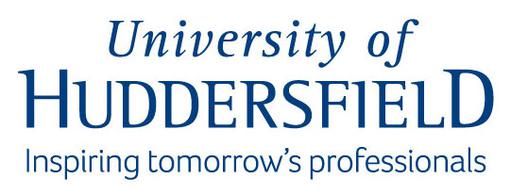Engineering courses
University of Huddersfield

Duration : 3 Years
Intake : Sep
IELTS : 6.0
TOEFL : 0
PTE : 51
University Course Details URL : Visit Website
Level : Undergraduate
Tuition & fees : £ 16,000 Per Year
University of Huddersfield Contact Details
1 Pace Plaza, New York, NY, 10038, USA
Email: intlgradadmission@pace.edu
Phone: +18667223338
About Electronic Engineering And Computer Systems Beng(hons) in University of Huddersfield
Electronics and computers are all around us and developments in both can have a big impact in our daily lives. ‘Invisible computers’ help to operate everyday equipment like supermarket scanners, central heating timers and car management systems, but also larger systems such as, diagnostic equipment used in hospitals, broadband and satellites. This STEM course has been designed to help you understand how electronics and computers work together, and could help you gain a job at the forefront of technological developments to meet the ever-increasing demand for new sustainable solutions to improve society and everyday life.
The aim of the course is to develop your understanding of:
- Computer systems architectures
- Networks
- Internet of Things (IoT)
- Embedded systems
IoT is a network of physical objects (devices, vehicles, buildings etc) which are embedded with electronics, software and sensors, enabling them to collect and exchange data. We’ll look at software and hardware and how they are designed for embedded systems. And you’ll have the chance to understand the principles of electronic engineering and develop the skills to be able to work in a wide range of industries.
The course also covers areas of electrical, electronic and communication engineering enabling you to develop expertise in a variety of electronics and electrical engineering areas. This means you can explore different areas of the subject and if you find you are particularly interested in one area you can tailor your studies towards that.
During your studies you have the chance to take a placement after your second year. You could work in the industry and put what you’ve learnt into practice. We’ll also give you the opportunity to take part in national competitions like the Institution of Mechanical Engineers (IMechE) Formula Student,Railway Challenge and UAS (or comparable design and build team projects).
It’s accredited by the Institution of Engineering and Technology (IET) on behalf of the Engineering Council. That means you could become a registered Incorporated Engineer (IEng) if you graduate, and following further learning you could also be on your way to becoming a registered Chartered Engineer (CEng).
You might like to hear what Philippa has to say about studying Electronic and Electrical Engineering BEng(Hons) at the University of Huddersfield.
Entry Requirements
- You may be considered for entry onto Undergraduate courses if your Standard XII award (i.e. HSSC) was awarded by CBSE, CISCE or Metro state boards. Otherwise you may need to complete an access (foundation) programme.
English language requirements
- IELTS :6.0 with no lower than 5.5 in any element.
- PTE:51
University of Huddersfield Cost of Attendance
The estimated cost of attendance for international students living in UK for the year 2021-2022 is tabulated below:
| Expense | Annual Expense (in Pounds) |
|---|---|
| Accommodation | 3,080-4,620 |
| Food/Housekeeping | 1,320- 1,760 |
| Travel | 220-440 |
| Phone | 220-440 |
| Insurance | 88-132 |
| Tv License | 132 |
| Social Costs | 1,320- 1,760 |
| TOTAL | 6,380- 9,284 |
Know more about Studying in USA
| Tuition Fees in USA (1st Year Average) | BE/Btech: USD 28300 | MS: USD 22693 | BBA: USD 26616 | MBA: USD 29558 | BSc: USD 29418 | MA: USD 20452 | MIS: USD 22133 | MFin: USD 37683 | MEng: USD 29558 | MIM: USD 35301 | MEM: USD 23254 | MArch: USD 34741 | MFA: USD 28857 | BHM: USD 27176 |
| Average Accomodation & Food Costs in USA | USD 700 to 1000 Per Month |
| Entrance Exams in USA | TOEFL: 86 | IELTS: 6.5 | PTE: 60 | GRE: 309 | GMAT: 560 | SAT: 1177 |
| Work and Study in USA | Permitted for 20 hours/week with a valid study permit. Know More |
| Post Study Work Permit in USA | One to Two Years after graduation depending on the course. |
| Cost of Student Visa in USA | USD 160 |
| Student Visa in USA | F1 Visa for USA allows you study permit in USA in full time academic courses. Any accredited school, college, university, academic institute, seminary, or conservatory in USA must accept you beforehand to apply for F1 visa in USA. Know More |
| Intakes in USA | There are Three Intakes in USA: Fall (August-September), Spring (January) Know More |
| Top Job Sectors in USA | Health Care, Education, Construction, Hospitality & Tourism, Business Services, Finance. |
| Economy in USA | GDP Growth of 2.1% (Q4 2019), The Larges Economy of the World by Nominal |